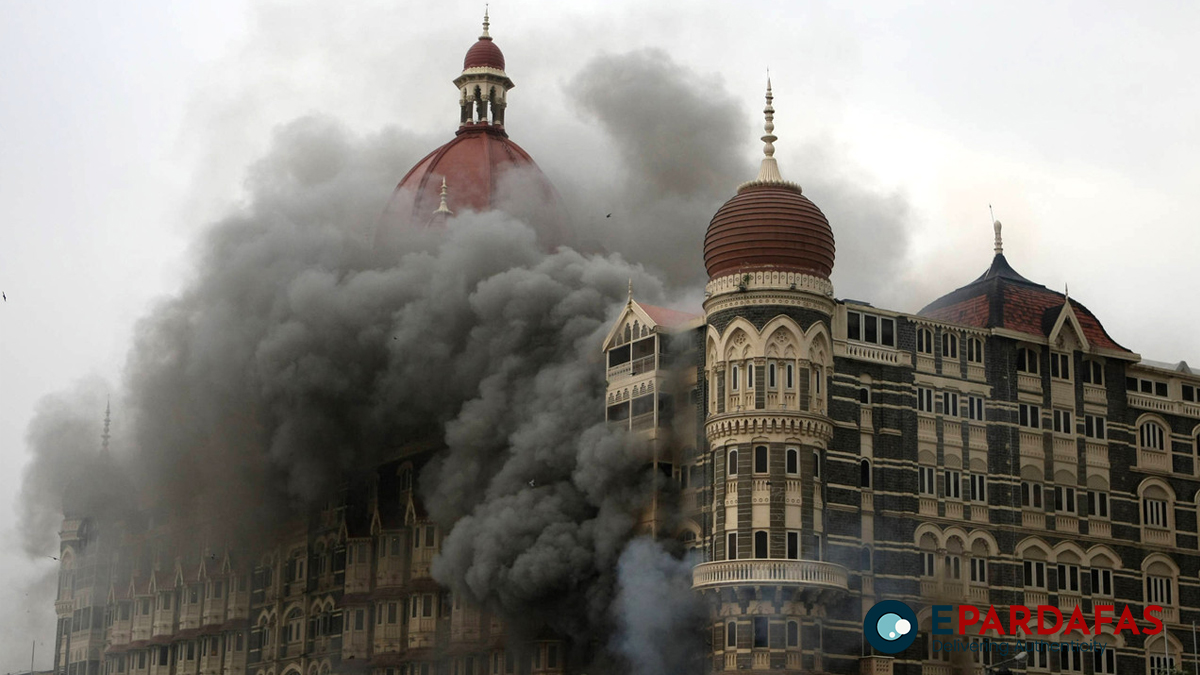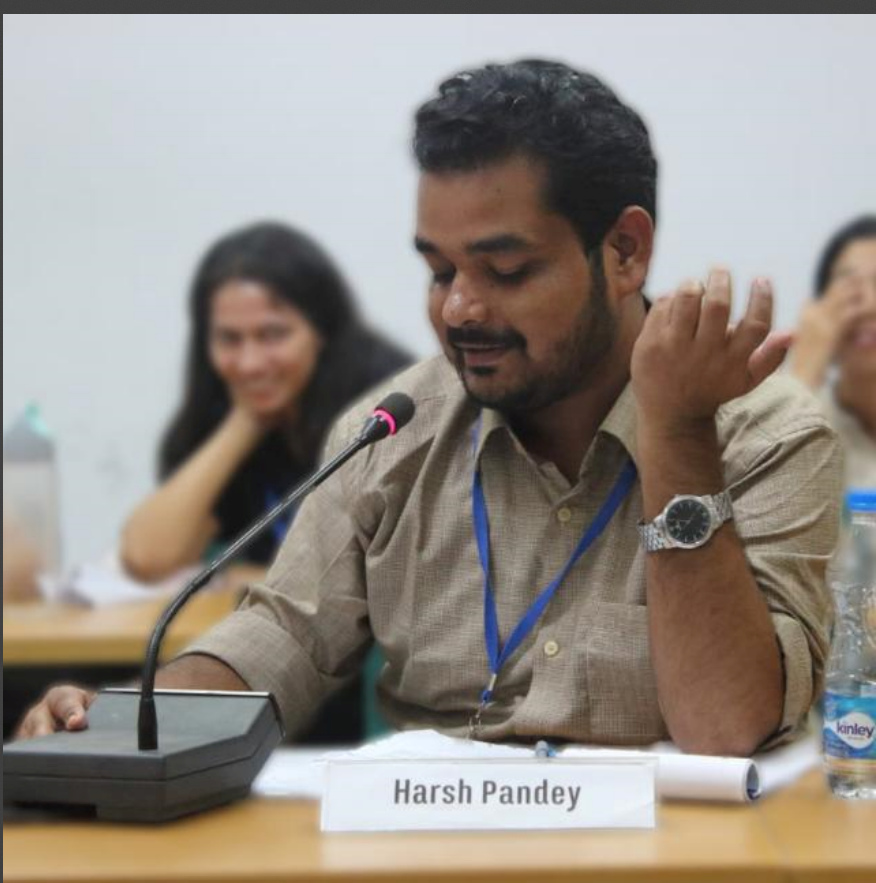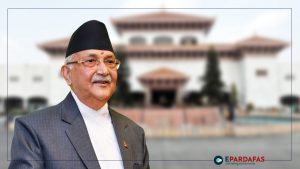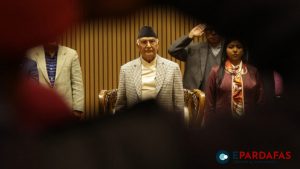
16 years of 26/11 Terror Attacks: How it Changed the Security Dynamics of the Indian Subcontinent Forever?

Yesterday marks the 16th anniversary of a tragedy which changed not only the Indian subcontinent in a phenomenal manner but also the world to some extent, like the terrorist attack on the USA on 9/11. We are talking about the 26/11/2008 attacks by Lashkar E Tayyaba (LeT) terrorists on the financial capital of India, Mumbai. Coordinated and operationalised from Pakistan, this attack claimed the lives of at least 174 people, including 20 security force members and 26 foreign nationals.
These attacks also injured 300 members. A total of 10 attackers came from the Arabian Sea via Karachi to Mumbai; 9 of them were killed, and one was arrested, tried, and later executed by India. This attack marked two distinct changes, which later developed a profound impact on the security of the subcontinent and the reputation of Pakistan. This incident woke the West and developed world from a long sleep, effectively eroding the distinction between different kinds of victims of terrorism. It also enabled India to take a long-lasting approach to the security of the country. Through this article, we will delve into crucial details that created such dynamics, which include India’s institutional response and Pakistani ambivalence on the attacks the article will conclude by finally establishing how the responses by Pakistan shaped the security calculus of the subcontinent where it has been seen as pariah amongst its neighbours.
India’s Response
The Mumbai attacks brought the India-Pakistan relationship to its nadir. Though bilateral relations thawed fitfully since the early 2000s with gestures to improve trade ties and people-to-people connectivity, 26/11 dealt a near-fatal blow to these efforts. This moved India to strengthen its perception that Pakistan’s promises of anti-terrorism cooperation were empty. As Islamabad officially condemned the attacks and ruled out state involvement, its unwillingness to bring LeT leaders like Hafiz Saeed into the court of law created an insurmountable trust deficit. This mistrust spilt over to multilateral arenas as well, where India mobilized an effort to diplomatically isolate Pakistan and restrict its access to global financial systems on terror financing.
India went through a seismic shift in its security landscape in the post-26/11 era. The attacks highlighted gaps in intelligence sharing, coastal surveillance, and coordination in response. This led to a string of reforms like the creation of the National Investigation Agency (NIA): Designed to investigate and prosecute terror-related crimes, the NIA became the centripetal force in counterterrorism. India furthered its coastal security by bringing in patrolling vessels that could travel faster and coordinating them with the Indian Navy, Coast Guard, and state maritime police. The Multi-Agency Centre has been strengthened to share real-time intelligence among states and the agencies concerned. Units like Maharashtra Force One came into existence, specially trained to deal with urban threats quickly. These were proactive steps that would thwart such attacks rather than mere reactions to them.
Pakistan’s Ambivalent Stance
India immediately provided a detailed dossier to Pakistan, documenting the role of Lashkar-e-Taiba and the origins of the attacks in Pakistan. This evidence included testimony from the lone surviving attacker, Ajmal Kasab; the GPS coordinates used by the terrorists; communications intercepts between the terrorists and their handlers in Pakistan; and records of the training camps within Pakistan-administered areas. This dossier was very strong because of inputs from international agencies, including the FBI, that had assisted in piecing together the operational trail leading back to Pakistan. But the Pakistani response was predictably evasive. While the civilian government led by then-President Asif Ali Zardari condemned the attacks and assured cooperation, the actions taken by Rawalpindi (Pakistan’s Army headquarters) painted a starkly different picture. The accused LeT commander, Zaki-ur-Rehman Lakhvi, was briefly taken into detention but let loose, and LeT’s chief Hafiz Saeed operated in the open under cover of his supposedly benign Jamaat-ud-Dawa. Even though listed as a global terrorist by the United Nations, Saeed remained a free man for years, delivering inflammatory speeches and encouraging violence against India.
Pakistan’s judiciary also did little to help matters, dismissing key individuals suspected of involvement in the attacks due to lack of evidence and loopholes in procedure. Pakistan’s civilian government showed no will or seemed incapable of reigning in its military and intelligence services, which have long supported entities like LeT as strategic assets. It’s very casual dismissiveness of evidence further infuriated India and sapped international credence for Pakistan’s stated intention of doing something about terrorism.
Tough Consequences for Pakistan
The spotlight on Pakistan post-26/11 underscored its precarious position as a state increasingly viewed as both a perpetrator of terrorism. India’s diplomatic offensive aimed to isolate Pakistan internationally. Such a strategy gained traction as evidence of Islamabad’s duplicity mounted. States like the United States and the United Kingdom, while acknowledging Pakistan’s geostrategic importance in Afghanistan, began recalibrating their policies, applying greater scrutiny to Pakistan’s actions. Pakistan’s failure to act decisively against the architects of 26/11 further estranged it from South Asia. India refused to resume meaningful dialogue, insisting that counterterrorism cooperation and action against groups like LeT and Jaish-e-Mohammed (JeM) remained preconditions for normalization. The region suffered a direct blow with the attacks on 26/11, arresting even the nascent progress of the early 2000s in this regional dialogue process.
The South Asian Association for Regional Cooperation (SAARC), already plagued with inefficiency, became a casualty of this mistrust. India began initiatives without Pakistan-for example, in the BIMSTEC Bay of Bengal Initiative for Multi-Sectoral Technical and Economic Cooperation framework-that deliberately left out Islamabad from regional connectivity and trade discussions. Pakistan’s self-inflicted isolation came across clearly as its proposals were either ignored or bypassed in the regional forums. The inability to prosecute LeT operatives and crack down on terror financing led Pakistan to be grey-listed by the Financial Action Task Force (FATF). This status, which Pakistan was unable to escape for years, constrained Pakistan’s financial and diplomatic leverage markedly. However, incremental progress under FATF pressure could only demonstrate a lack of political will when Pakistan failed to respond promptly to key mandates.
Pakistan’s chary attitude towards dismantling terror networks created a boomerang effect. Groups like LeT and Tehrik-i-Taliban Pakistan (TTP) began to assert greater autonomy and targeted Pakistani state institutions. The military, being tacitly complicit in such nurturing of terror groups, equally began facing ire from them and ended up being attacked devastatingly at military installations and civilian population centres. The damage inflicted on the reputation by 26/11 further discouraged foreign investors, worsening Pakistan’s already weak economy. Added to internal corruption, energy crises, and political instability, this economic deterioration further shoved Pakistan deep into dependence on Chinese loans and IMF bailouts, systematically eroding its sovereignty.
Churning in Subcontinental Geopolitics
The consequences of 26/11 extended far beyond India’s borders, bringing into sharp focus the fragile security climate of the region. For the United States, it highlighted the interconnectedness between Pakistani terror organizations and international jihadist networks. While the US supports India’s demands for dismantling of Pakistani terror camps, it also brought diplomatic heat on Islamabad to reel in groups such as LeT. But this pressure was limited, with US-Pakistan relations remaining fixated on anti-terrorism operations in Afghanistan. China, though cautious, subtly supported Pakistan, aware of its geopolitical value as a counterweight to India. This underscored the complexities of leveraging international opinion against Pakistan, with its strategic ties with major powers.
The 26/11 attacks were not only a moment of reckoning for India but also a catalyst in reshaping the geopolitical contours of South Asia. While India emerged from the crisis with a fortified security apparatus and enhanced global standing, Pakistan’s refusal to act against terror networks condemned it to increasingly irrelevance in the region. This mistrust seeded by Pakistan’s deception continues to shape South Asia’s security architecture. Islamabad has remained unable or unwilling to address its structural flaws or even to recalibrate its policies toward its neighbours. This has left Islamabad isolated, economically fragile, and politically unstable. Here, while India forges ahead with regional and global partnerships, Pakistan is only marginalized—a grim reminder of the cost of prioritizing short-term strategic gains over long-term stability.
The legacy of 26/11 for South Asia stands as stark testimony: a region that signifies progress and advancement is chained by the unsolved shadows of terrorism and distrust. Whether this paradigm will see a paradigm shift or not depends on Pakistan’s willingness to break free from its past and to look forward to a future free from the scourge of extremism-a prospect yet uncertain.
Harsh Pandey is a PhD Candidate at the School of International Studies, JNU, New Delhi.












Comments